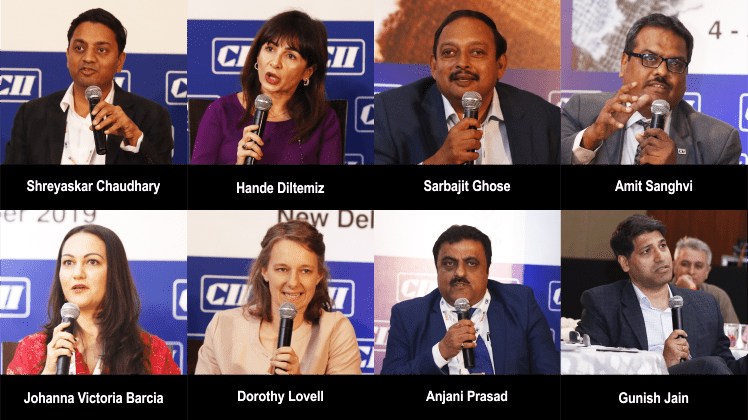News and Features
8 industry experts share how compliance is not a cost
12 January 2020
Apparel Resources

At a time when the industry is struggling for prosperity and fighting on costing and buyers are asking for several specific parameters, it is imperative for all stakeholders of the textile and apparel industry to be cost-competitive.
Many are of the view that building a conscious, compliant and competitive textiles’ value chain adds to the costing while some believe that it makes one more competitive in the long run. Apparel Resources brings to you the views of some of the leading industry experts on the same.
Nowadays, business is all about adding value, and sustainability is an integral aspect of this value. Pratibha Syntex is one of the most respected names when it comes to sustainability. Shreyaskar Chaudhary, MD of the company believes that sustainability is in the company’s DNA, and his effort for the same will increase continuously. He asserts that as far as cost is concerned, he always tries to strike a balance, and all the levels of sustainability and compliance increase the overall efficiency in the long run.
The apparel industry is increasingly moving towards being buyer-driven, and buyers are driven by customers. Hande Diltemiz, MD, H&M Production (India & Sri Lanka) shares that she has noticed a big shift in consumer behaviour over the years. Customers want to give some message to the world through their shopping experience. They don’t want free products, but they are keen to know where the product is coming from, who produced it and under what circumstances, how many resources (environmental or social) were used for the product.
“If we are not offering what customers are looking for, we are not immediate any more for the customer. It pushes all the brands to be more sensitive about suppliers, region and everything. Sustainability makes the business sustainable,” Hande adds.
Another leading Indian apparel brand Laguna Clothing is well known for its compliance and sustainable initiatives. Sarbajit Ghose, MD of the company believes that today everyone looks at the holistic picture rather than focusing on just quality or sustainability,“As a supplier, you can add value to the chain. Are you a reliable supplier and do you have foresight to align with end-consumer’s requirements? I think it’s a huge opportunity for the players who are already on the bandwagon and are getting the benefits. I don’t think there are many brands or buyers coming to suppliers who don’t know that customers are asking for sustainability.”
Amit Sanghvi, Principal Counsellor, CII Centre of Excellence for Competitiveness adds here that majority of Indian companies need to work on their basics, “At the company or factory level, management’s thinking and employees’ thinking need to be aligned on similar lines, while on an industry level, the entire value chain has to be competitive compared to global standards. CII Centre of Excellence for Competitiveness supports the industry in areas like cost, quality, delivery, and most importantly, in the culture of improvement.”
Amit insists that the entire value chain doesn’t have any other option rather than to become compliant and competitive, thinking about the customer’s perspective or need. Time, cost-effectiveness and sustainability are the three major focus areas. To make SMEs competitive, a mindset change is must and the target is to get maximum efficiency and zero-defect manufacturing.
Some of the stakeholders strongly believe that most of the compliance strategies like paying proper overtime, ensuring health and safety, etc. are implemented by the factories on their own. Johanna Victoria Barcia, Country Manager, Varner Group says, “We have QR code in our products to ensure full traceability, so compliances are at a very high level in our priorities. Customers are quite demanding and conscious about sustainability. We are also running a programme to support the workers in South India.”
Dorothy Lovell, Policy Analyst, The Organisation for Economic Co-operation & Development (OECD) opines, “We have to stop fixing compliance against competition or competitiveness because compliance (at least legal compliance) is a necessary condition of the business. Yes, there are operational challenges faced during compliance, but there are examples proving how compliance has benefited business.”
Selection of right materials and processes are also major tools to save cost, and some chemicals or allied products’ suppliers are supporting the industry on this front. Anjani Prasad, MD, Archroma India says, “Overall costing needs to be calculated by keeping in mind the hidden costs like wastewater management, energy, sustainability, etc. There are some defects in most of the plants that can be easily controlled by using the right processes like sucking device for fibres.”
Costing needs to be seen on the collective front also. Many CETPs are not working properly across India; there are a lot of issues regarding infrastructure which also increase the costing.
“Sustainability and cost are actually not countering each other. One can be sustainable by being competitive and even being sustainable saves cost. Working on energy and water footprint helped us to reduce cost by around 3 to 4 per cent,” Gunish Jain, Director of Beebay Kids Apparels and BlueKaktus.
Comments

